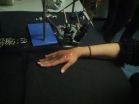(Press-News.org) Reducing deforestation in the tropics would significantly cut the amount of carbon dioxide emitted into the atmosphere – by as much as one-fifth – research shows.
In the first study of its kind, scientists have calculated the amount of carbon absorbed by the world's tropical forests and the amounts of greenhouse gas emissions created by loss of trees, as a result of human activity.
They found that tropical forests absorb almost two billion tonnes of carbon each year, equivalent to one-fifth of the world's carbon emissions, by storing it in their bark, leaves and soil. However, an equivalent amount is lost through logging, clearing of land for grazing, and growing biofuel crops such as palm oil, soya bean and sugar. Peat fires in forests add significantly to the greenhouse gas emissions.
Researchers estimate that if all human-related deforestation of the tropics were to stop, the forests could absorb more carbon than at present, equivalent to one-fifth of global emissions.
Researchers say carbon emissions from tropical forests will increase as the climate warms, as rising temperatures accelerate the decay of dead plants and trees, giving off more CO2. Global temperatures are forecast to rise by two degrees by the year 2099, which is predicted to increase annual carbon emissions from the forest by three-quarters of a billion tonnes.
Scientists from the Universities of Edinburgh and Leeds analysed data from multiple previous studies, including satellite studies, to determine the amount of carbon absorbed and emitted by the world's tropical forests in South and Central America, equatorial Africa and Asia.
Their study, published in Global Change Biology, was supported by the Natural Environment Research Council.
Professor John Grace of the University of Edinburgh's School of GeoSciences, who led the study, said: "If we limit human activity in the tropical forests of the world, this could play a valuable role in helping to curb the rise in carbon dioxide in the atmosphere. Preventing further losses of carbon from our tropical forests must remain a high priority."
INFORMATION: END
Saving trees in tropics could cut emissions by one-fifth, study shows
2014-06-06
ELSE PRESS RELEASES FROM THIS DATE:
York scientists provide new insights into biomass breakdown
2014-06-06
Scientists at the University of York are playing a key role in the quest for a better understanding of how a recently discovered family of enzymes can degrade hard-to-digest biomass into its constituent sugars.
The enzymes – lytic polysaccharide monooxygenases (LPMOs) – are secreted by both fungi and bacteria and have the ability to 'chip away' at cellulose and other intractable materials. This allows cellulosic materials such as plant stems, wood chips and cardboard waste, as well as other tricky polysaccharides such as insect/crustacean shells, to be broken down.
Finding ...
Infection in malaria-transmitting mosquito discovered
2014-06-06
Boston, MA – Researchers have found the first evidence of an intercellular bacterial infection in natural populations of two species of Anopheles mosquitoes, the major vectors of malaria in Africa. The infection, called Wolbachia, has been shown in labs to reduce the incidence of pathogen infections in mosquitoes and has the potential to be used in controlling malaria-transmitting mosquito populations.
"Wolbachia is an interesting bacterium that seems perfectly suited for mosquito control. However, there were strong doubts that it could ever be used against field Anopheles ...
Three gene networks discovered in autism, may present treatment targets
2014-06-06
A large new analysis of DNA from thousands of patients has uncovered several underlying gene networks with potentially important roles in autism. These networks may offer attractive targets for developing new autism drugs or repurposing existing drugs that act on components of the networks.
Furthermore, one of the autism-related gene pathways also affects some patients with attention-deficit hyperactivity disorder (ADHD) and schizophrenia—raising the possibility that a class of drugs may treat particular subsets of all three neurological disorders.
"Neurodevelopmental ...
Asymmetric continental margins and the slow birth of an ocean
2014-06-06
When South America split from Africa 150 to 120 million years ago, the South Atlantic formed and separated Brazil from Angola. The continental margins formed through this separation are surprisingly different. Along offshore Angola 200 km wide, very thin slivers of continental crust have been detected, whereas the Brazilian counterpart margin features an abrupt transition between continental and oceanic crust.
For decades, geoscientists have struggled to explain not only why the amount of thinning and the geometries of opposite rifted continental margin are not symmetric, ...
Text messaging program helps smokers fight the urge to light up
2014-06-06
WASHINGTON, DC (June 6, 2014) — More than 11 percent of smokers who used a text- messaging program to help them quit did so and remained smoke free at the end of a six- month study as compared to just 5 percent of controls, according to a new report by researchers at Milken Institute School of Public Health at the George Washington University (Milken Institute SPH.)
"Text messages seem to give smokers the constant reminders they need to stay focused on quitting," says Lorien C. Abroms, ScD, MA, an associate professor of prevention and community health at Milken Institute ...
Sleep apnea tied to diabetes in large study
2014-06-06
In the largest study to date of the relationship between sleep apnea and diabetes, a new study of more than 8,500 Canadian patients has demonstrated a link between obstructive sleep apnea (OSA) and the development of diabetes, confirming earlier evidence of such a relationship from smaller studies with shorter follow-up periods.
"Our study, with a larger sample size and a median follow-up of 67 months was able to address some of the limitations of earlier studies on the connection between OSA and diabetes," said lead author Tetyana Kendzerska, MD, PhD, of the University ...
Newborns exposed to dirt, dander and germs may have lower allergy and asthma risk
2014-06-06
Infants exposed to rodent and pet dander, roach allergens and a wide variety of household bacteria in the first year of life appear less likely to suffer from allergies, wheezing and asthma, according to results of a study conducted by scientists at the Johns Hopkins Children's Center and other institutions.
Previous research has shown that children who grow up on farms have lower allergy and asthma rates, a phenomenon attributed to their regular exposure to microorganisms present in farm soil. Other studies, however, have found increased asthma risk among inner-city ...
Biomarkers accurately distinguish mesothelioma from non-cancerous tissue
2014-06-06
Philadelphia, PA, June 6, 2014 – Scientists have identified four biomarkers that may help resolve the difficult differential diagnosis between malignant pleural mesothelioma (MPM) and non-cancerous pleural tissue with reactive mesothelial proliferations (RMPs). This is a frequent differential diagnostic problem in pleural biopsy samples taken from patients with clinical suspicion of MPM. The ability to make more accurate diagnoses earlier may facilitate improved patient outcomes. This new study appears in the Journal of Molecular Diagnostics.
"Our goal was to identify ...
Our ability to identify the source of pain varies across the body
2014-06-06
"Where does it hurt?" is the first question asked to any person in pain.
A new UCL study defines for the first time how our ability to identify where it hurts, called "spatial acuity", varies across the body, being most sensitive at the forehead and fingertips.
Using lasers to cause pain to 26 healthy volunteers without any touch, the researchers produced the first systematic map of how acuity for pain is distributed across the body. The work is published in the journal Annals of Neurology and was funded by the Wellcome Trust.
With the exception of the hairless skin ...
Turbulent black holes: Fasten your seatbelts ... gravity is about to get bumpy!
2014-06-06
Fasten your seatbelts – gravity is about to get bumpy.
Of course, if you're flying in the vicinity of a black hole, a bit of extra bumpiness is the least of your worries. But it's still surprising. The accepted wisdom among gravitational researchers has been that spacetime cannot become turbulent. New research from Perimeter, though, shows that the accepted wisdom might be wrong.
The researchers followed this line of thought: Gravity, it's thought, can behave as a fluid. One of the characteristic behaviours of fluids is turbulence – that is, under certain conditions, ...

